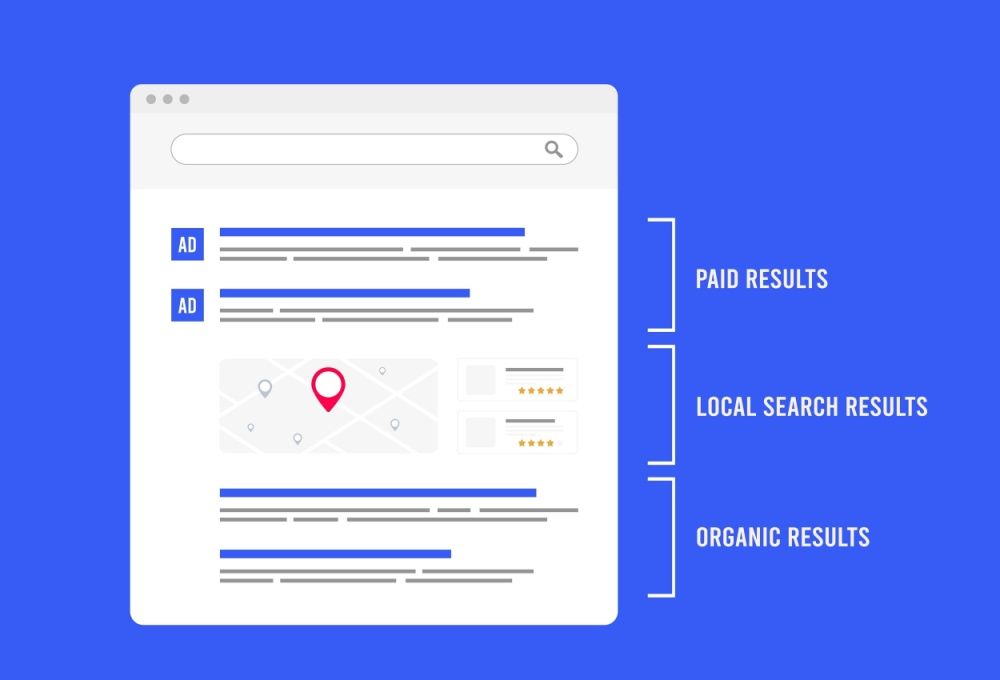
You put in the time, the money, and the effort for your search engine optimization strategy. You were told it was the path to getting more customers and growing your business. But now you’re left wondering, is any of this actually working?
You might feel like you’re just throwing money into a black box, hoping for the best. This is a common feeling, but there’s a straightforward way to get clarity. You need to understand what is the process of SEO monitoring.
It’s the only way to connect your SEO work to real business results. Small business SEO is a process to begin with you will need the right tools and processes for success. This guide explains the process of SEO monitoring, turning that black box into a clear picture of your website’s performance. You’ll know exactly where you stand and what moves to make next.
Why You Can’t Just ‘Set and Forget’ Your SEO
Thinking of search engine optimization as a one-time setup is a recipe for wasted effort. The internet is not a static place; its dynamic nature means constant change. Your competitors are constantly working to outrank you, publishing new articles and building new links as part of their digital marketing plan.
Google also updates its search algorithms frequently, with major algorithm updates capable of shifting search results overnight. These changes can reward some sites and penalize others, affecting your site performs in Google Search. What worked for your SEO strategy last month might not be effective next month.
This is why ongoing attention is so important. An effective SEO monitoring process is your system for catching these shifts and understanding your overall search performance. It gives you the feedback you need to adapt your strategy, fix problems, and capitalize on new opportunities for growth.
What Are the Key Metrics for SEO Monitoring?
Before diving into the process, it’s helpful to know which numbers matter most. Focusing on the right SEO metrics prevents you from getting lost in data. These key metrics provide a clear view of your SEO performance and are central to any good SEO tracking system.
These indicators tell the story of how well your engine optimization efforts are working. They bridge the gap between actions you take and the results you see. Let’s look at some of the most critical ones.
- Organic Traffic: This is the number of visitors who arrive at your website from a search engine result, not from paid ads. It is a fundamental indicator of your search visibility. Growing organic traffic is a primary goal of any SEO campaign.
- Keyword Rankings: This tracks your website’s position in the search engine rankings for specific keywords. Improvements in your search engine ranking show that Google views your content as relevant for those queries. We look at trends over time, not daily spikes.
- Click-Through Rate (CTR): This is the percentage of people who click on your website link after seeing it in the search results. A high CTR suggests your title tags and meta descriptions are compelling. You can find your average CTR in Google Search Console GSC.
- Bounce Rate: This metric shows the percentage of visitors who leave your website after viewing only one page. A high bounce rate can indicate that your content didn’t match the searcher’s intent or that the user experience was poor.
- Conversion Rate: This is arguably the most important metric. It measures the percentage of visitors who complete a desired action, such as making a purchase, filling out a form, or signing up for a newsletter. Healthy conversion rates are the ultimate sign of SEO success.
- Domain Authority: This is a score developed by Moz that predicts a website’s ability to rank in search engine results. While not a direct ranking factor for Google, it provides a useful benchmark for your site’s overall authority and is helpful in competitor analysis.
The Process of SEO Monitoring: A Step-by-Step Breakdown
Let’s break this down into simple, manageable steps. This process is not about getting lost in data. It’s about looking at the right things to get a true pulse on your SEO health and site performance.
Step 1: Tracking Your Keyword Rankings
This is probably what most people think of first. Where do you show up on Google for the phrases that matter to your business? Tracking your engine ranking is like looking at your website’s report card for its visibility in google search.
It tells you if your SEO efforts are helping you become more visible for important search terms. Don’t panic over small, daily fluctuations in your engine rankings. What you’re really looking for are the long-term trends over weeks and months.
Are your most important keywords climbing from page two to page one? Are new keywords starting to appear in the top 100? Monitoring helps identify these positive trends, confirming your content marketing is resonating. You can find this data, including your average position for queries, within the free Google tool, Search Console.
Step 2: Watching Your Website’s Health
Your website’s technical foundation is critical for good site performance. If Google can’t easily crawl and understand your site, it won’t matter how great your content is. A healthy site with solid technical SEO is a rank-worthy site.
You need to keep an eye on a few technical items. Regular site audit sessions help identify technical SEO issues before they become major problems. First are crawl errors, like 404 “not found” pages, which create dead ends for search engines and hurt the user experience.
Next is your site speed; people will not wait for a slow website to load. You can check your speed using Google’s own PageSpeed Insights tool. Finally, make sure your site works perfectly on phones. So many people use their mobile devices for searching, making a mobile-friendly design non-negotiable.
Also, pay attention to potential duplicate content issues, where the same or similar content appears on multiple URLs. This can confuse search engines and dilute your ranking potential. Ensuring clean internal linking structures and well-written meta descriptions for each page also contributes to a healthier site.
Step 3: Analyzing Organic Traffic and User Behavior
Rankings are great, but what really matters is whether people are actually visiting your site from organic search and what they do when they get there. This step connects your SEO work to business goals. This is where you move from just watching rankings to understanding impact.
Google Analytics is your best friend here for analyzing monitoring data. Look at your organic traffic; is it growing month over month? This shows if your higher search engine rankings are leading to more visitors from different traffic sources.
But don’t stop at traffic numbers. How long are people staying on your pages? Are they visiting multiple pages or leaving right away? These user behavior signals tell Google if your content is satisfying the person searching, which directly influences future search performance.
Step 4: Monitoring Your Backlink Profile
Think of backlinks as votes of confidence from other websites. When a reputable site links to yours, it tells Google that your content is trustworthy and valuable. A strong portfolio of backlinks from sites with high domain authority is a huge part of SEO success.
Monitoring your backlink profiles means watching for new links you’ve earned, which shows your content strategy is working. But you also need to watch for links you’ve lost, as pages sometimes get deleted or changed. SEO monitoring helps catch these lost links so you can try to reclaim them.
It’s also important to watch out for low-quality or spammy links. A flood of bad links can actually hurt your site’s reputation and search visibility. If you see an influx of them, you may need to use Google’s disavow tool to ask them to ignore those links and protect your site’s performance.
Step 5: Keeping an Eye on Your Competitors
Your business does not exist in a vacuum, and neither does your website. Your competitors are your benchmark. Watching what they do with their SEO strategies can give you incredible insights.
A thorough competitor analysis is a key part of an ongoing SEO strategy. Pay attention to the keywords they are ranking for that you are not. This can reveal new content opportunities for your own site.
What new blog posts are they publishing? What topics are working well for them on their website and on social media? You can also see what new backlinks they are getting. Understanding where they get their links from can help you build your own link-building strategy. This isn’t about copying them; it’s about learning from their successes and failures to make your own digital marketing more effective.
Tools to Help With SEO Monitoring
You do not need a huge budget or a dozen complicated programs for SEO monitoring. You can get a huge amount of information from free tools, especially the ones Google gives you directly. Getting familiar with these is a great first step for any SEO monitoring tool.
The two most important SEO monitoring tools are Google Search Console and Google Analytics. They work together to give you a complete picture of your site’s performance, from search results to on-site behavior. Most professional SEOs use these SEO tools every single day.
The Console GSC, also known as Google Search Console GSC, is particularly powerful. It’s the most direct way to understand how Google views your website. It provides data you can’t get anywhere else.
| Tool | Main Purpose | Key Questions It Answers |
|---|---|---|
| Google Search Console (GSC) | Performance in Google Search | Which keywords drive clicks? What is my average CTR? Are there technical SEO issues hurting my site? Is my site indexed? |
| Google Analytics (GA4) | Website traffic and user behavior | How many people visit from various traffic sources? Which pages are most popular? Do visitors become customers and improve conversion rates? |
| Third-Party SEO Tool (e.g., Ahrefs, Semrush) | Competitive & Backlink Analysis | What keywords are my competitors ranking for? What are their backlink profiles? What is my site’s Domain Authority? |
Google Search Console is essential for understanding your performance in google search. It shows you the queries people use to find you, your click-through rate, and any technical errors holding you back. You can also submit sitemaps and check your indexing status here.
Google Analytics then tells you what happens after they click through to your site. It helps you understand your audience, track which content is most engaging, and measure your conversion rate. It’s the key to connecting traffic to business outcomes.
While a free google tool can get you far, dedicated SEO monitoring tools from third parties offer deeper insights, especially for competitor analysis and backlink monitoring. These paid monitoring tools often package data in a way that is easier to analyze and can save a lot of time for those managing complex SEO efforts.
How Often Should You Monitor Your SEO?
This is a question that stumps a lot of business owners. You do not want to be obsessive, but you cannot be absent either. The key is to establish a rhythm that works for you and your business needs.
Certain things need more frequent checks than others. For instance, you would want to know immediately if your whole site went down. But checking keyword rankings every hour is not a productive use of your time for an effective SEO strategy.
Here is a simple schedule you can follow for your SEO tracking. This framework keeps you informed without causing you to get bogged down in monitoring data. It strikes a good balance between staying on top of things and focusing on your business.
| Frequency | What to Check | Why It Matters |
|---|---|---|
| Daily | Website Uptime & Critical Errors | You lose money and ranking potential every minute your site is down or broken. Catching major SEO issues fast is critical. |
| Weekly | Keyword Ranking Trends & Top Pages | Catch upward or downward trends early to react quickly. Check which pages are driving the most organic traffic. |
| Monthly | Overall Traffic Growth, Backlinks, Competitor Actions | See the big picture to adjust your long-term SEO strategy. Analyze your backlink profile and see what competitors are up to. |
| Quarterly | Full Technical Site Audit & Content Review | Perform a deep check for technical health and identify content that needs to be updated or removed to maintain quality. |
This schedule keeps you informed without causing you to get bogged down in data. It strikes a good balance between staying on top of things and focusing on your business. Over time, you’ll get a feel for the natural rhythm of your site’s performance and adjust as needed.
Conclusion
Putting a system in place for SEO monitoring changes everything. It takes the guesswork out of the equation and puts you back in the driver’s seat. You no longer have to wonder if your investment is paying off because the monitoring data will show you the answer.
Understanding what is the process of SEO monitoring isn’t about becoming an SEO expert overnight. It is about learning to read the signals from key metrics like organic traffic and conversion rates. This knowledge allows you to make smarter business decisions.
Looking for an SEO company to help with your digital marketing efforts, give us a call.
By following these steps, you can ask your marketing team the right questions, refine your SEO strategy, and finally get the peace of mind that comes from knowing exactly where you stand. A consistent monitoring process is the foundation of long-term SEO success.












